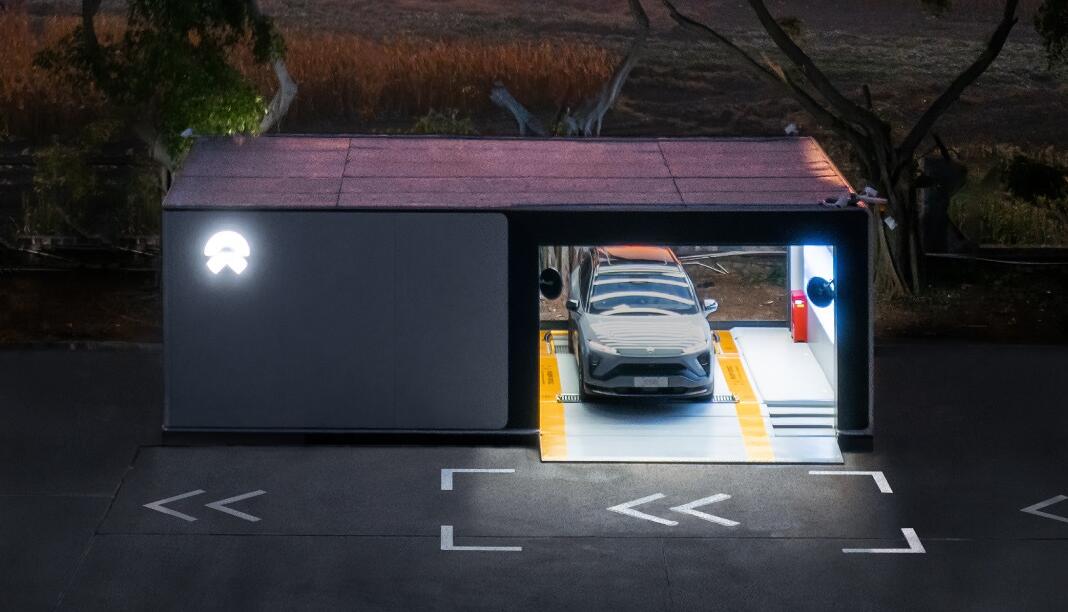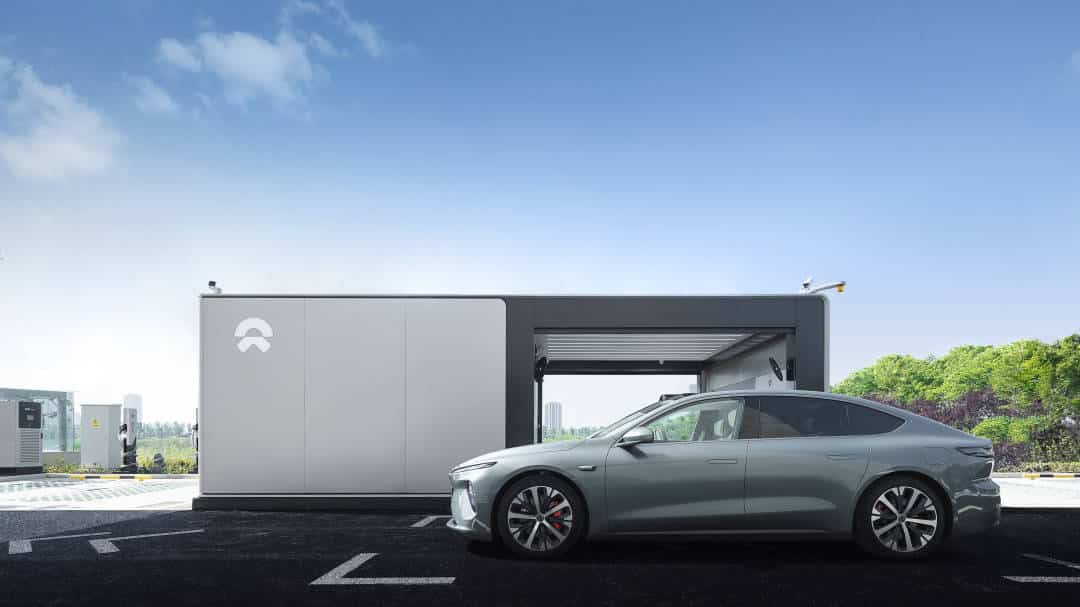Update: Content updated to reflect that Nio's number of battery swap stations reached 999 as of July 5.
If all of Nio's battery swap stations start charging, a battery swap station providing 50 services per day could reach the break-even point, an executive previously said.
(Image credit: Nio)
Nio (NYSE: NIO, HKG: 9866, SGX: Nio) has reached the 10 millionth battery swap service milestone, as the service has become the preferred way for its vehicle owners to replenish energy over the past four years.
On July 4, 2018, at 20:39:13 Beijing time, Nio customers reached 10,000,000 cumulative battery swap uses as an Nio ES8 drove out of a battery swap station in Shanghai, the company said Monday.
Nio opened its first battery swap station in Shenzhen on May 20, 2018, and as of July 5, it had 999 battery swap stations and 896 supercharging stations in China, according to data monitored by CnEVPost.
Nio owners were skeptical in the early days of battery swap service availability, but as they have experienced the convenience of the service over the past few years, battery swap has gained widespread acceptance.
It took Nio 29 months to see its battery swap service reach its first 1 million, 20 months to go from the 1 millionth to the 9 millionth, and only 1 month to go from the 9 millionth to the 10 millionth.
The user who uses the service the most has swapped batteries 1,364 times, and the user who visits battery swap stations the most has been to 169 different facilities, according to Nio.
To date, 303 Nio customers have never charged their vehicles since they were delivered and only use the battery swap service, Nio said.
Nio's battery swap stations currently provide an average of more than 30,000 services per day, meaning that on average, a vehicle is driven from one of Nio's battery swap stations with a fully charged battery replaced every 2.8 seconds, the company said.
Considering that Nio now has 998 battery swap stations, that means that on average, each of these facilities provides more than 30 services per day.
It's worth noting that Nio is not yet in a position to profit from the battery swap service, as it is still in the process of developing user habits.
In a research note late last year, top Chinese investment bank CICC said that for battery swap station operators in China to be profitable, they are highly dependent on the utilization of the facilities.
With conservative estimates, CICC believes that 100 daily services are likely to be the break-even point, and that a daily service capacity of more than 160 trips would allow battery swap station operators to make a good profit.
Nio owners initially had to pay to use battery swap stations, but this led to low utilization of these stations, so Nio began offering the service for free to users in August 2019, although there is currently a monthly credit limit.
If all of Nio's battery swap stations start charging in the future, then a battery swap station providing 50 services a day could earn RMB 500,000-600,000 a year, thus reaching the break-even point, local media LatePost quoted Nio Power Vice President Shen Fei as saying late last year.
The 10 million battery swap service could provide users with a total of more than 1.98 billion kilometers of driving and reduce carbon emissions by about 130,327.5 tons, Nio said Monday.
In addition to making it easy for users to replenish energy, the service also makes it possible to upgrade batteries flexibly. To date, Nio has provided battery upgrades to more than 17,000 customers, allowing them to continue to enjoy the benefits of advances in battery technology, the company said.
Nio's initial 200 battery swap stations are first-generation facilities, and the company put its first second-generation battery swap station into operation on April 15, 2021, making it Nio's 201st battery swap station.
Nio's second-generation battery swap stations can store up to 13 batteries and have a maximum daily service capacity of 312 times. In comparison, the first generation battery swap stations store up to 5 batteries and have a maximum daily service capacity of 120 times.
The second-generation battery swap stations can also support automatic vehicle parking, allowing users to change batteries automatically without getting out of the vehicle.


